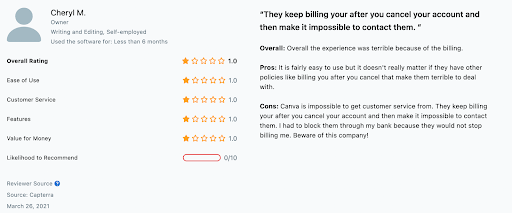How to create a SaaS go to market strategy
This article will be your go-to-market strategy guide for SaaS companies and will cover:
- What a GTM strategy is
- Why it matters
- How to develop a strategy
- Best practices to follow
- Templates to use
What is a go-to-market strategy for SaaS?
The go-to-market strategy (GTM) is a plan that describes how your company will bring its product to market and the steps it will need to take to succeed. Within this plan, your company must:
- Identify what is unique about your product.
- Convey that value to your audience.
- Outline a strategy for customer engagement and sales growth.
Although the above can apply to the GTM strategy of companies in various industries, for SaaS businesses, it is essential to remember that the customer base is likely already using a different service to try to solve the problem you want to solve.
The key here is to identify what about your service is an upgrade from existing options on the market and to target your service to remedy specific pain points that you know your customer base is experiencing in their current software solution.
Why is a SaaS go-to-market strategy important?
Developing a comprehensive GTM strategy is essential and can help your business avoid pitfalls that cause 90% of start-ups to fail. By thinking through your entire outline, your company will:
- Avoid mistakes: Making an outline of the plan gives you a clear and direct vision to help ensure that you don’t encounter significant miscalculations and errors that could have been avoided.
- Finesse your target market: Answering questions about your product and service, strategy, and audience will ensure you tightly connect what you offer to the right market. It’s easy to create a helpful software solution, but if it is not directed to the right audience, it will not succeed. This focus will help the company strategize moving forward.
- Think through the entire business: With this plan, you will get everyone on the same page, moving toward the same goal. There will be a vision of milestones you need to hit and how you plan to get there. Developing a GTM strategy will help you navigate bumps along the way and identify solutions aligned with your values and mission.
How to develop a SaaS go-to-market strategy
There are several categories of GTM strategies that a SaaS company can use, including:
- Differentiated strategy—focus on providing something unique to customers.
- Dominant strategy—focus on winning a variety of customer types.
- Discrete strategy—focus on targeting restricted audiences.
- Disruptive strategy—focus on providing a cost-effective solution to customers in the market for alternatives.
But, regardless of which one you choose, you will need to outline the following information. Having a clear idea of your answer to the following seven questions will be even more valuable than identifying whether you are using a discrete or disruptive strategy.
1. Determine your niche
Getting super specific about what you are offering and who you are offering it to will help your business stay focused and narrow in on a successful strategy.
Just because you start with a specific field doesn’t prevent you from expanding your audience or services in the future, but casting a wide net too early will reduce your team’s focus and make it harder to solve problems that arise in the early stages of bringing your SaaS company to market. Remember to:
- Define the market—Specify the geographic region, industry, type of company, and size of the market you are selling to. Make sure you are aware of the overall customer base, the solutions they are already using, and how you can offer a better option. What has worked before in this market, and what has failed? What share of the market is looking for a solution that you can offer?
- Understand how your product fits—Validate your software by gathering feedback from people in your relevant market to ensure that what you are offering matches their needs. This can help uncover a mismatch or show that you are pitching to the wrong market. By validating your idea, you can save time and money moving forward and ensure that your strategy is pointing in the right direction.
- Identify your target audience: Within your target market, identify ‘Buyer Personas’ that can allow you to see your audience as more specific individuals with more particular needs rather than a sweeping group. Ask yourself what are the major stressors of your customer base, what drives them to seek solutions, and what is the ideal endpoint and solution for that group? This will help you more successfully and advantageously cater your product and service.
2. Research the competition
Draw a complete map of the other services on the market, what they offer, who they target, what they charge, and where there are gaps. Use this comparative analysis to inform your business decisions and identify areas with the greatest opportunity to add value and provide new solutions.
Pro tip: Want to innovate in your industry but don’t know where to start? Begin by going through your competition’s public reviews and analyze their negative reviews! A ton of times, you’ll uncover precious insights that can inform your roadmap or the way you’ll need to successfully grow your SaaS platform. For instance, according to its negative reviews on Capterra, Canva clearly has issues with their customer support:
Where do the current software services leave customers frustrated or inefficient? How can you offer a solution to these issues that will cause people to convert to your platform? Use this analysis to articulate your company’s value proposition and identify your software’s features and benefits so that you are clear on how you will offer services that your customers want.
3. Determine pricing
While you may assume that to pull customers to your solution, you will need to offer a lower price than other comparable services on the market. This isn’t always true. You don’t want to risk under-pricing yourself and then realizing later that you need to raise prices and lose customers because of that change.
It is better to develop a pricing strategy that fits your needs and is accurate in proportion to the value you add. Calculate your operating costs, understand the financial constraints of the audience you are targeting, and consider offering various pricing tiers determined by:
- Number of users
- Amount of storage offered
- Quantity of features
For instance, Keywords Everywhere provides credit-based pricing, where credits are used for various keyword research tasks. Meanwhile, more complex SEO platforms like Ahrefs and Semrush offer tier-based pricing for their main offerings and allow users to purchase add-ons depending on their needs (e.g., more user seats, various integrations, etc).
4. Make a distribution strategy
Once you have identified your target audience, you must have a clear plan for reaching those people and companies. Outline which channels represent your target audience and distribute your product and marketing through those platforms.
SaaS go-to-market strategy example: Companies like Dropbox develop content marketing strategies like videos and webinars that attract relevant customers to their services across business, personal, and tech packages. By leveraging content marketing outreach, they can develop a continuous stream of customers with a high ROI. If you’re a boostrapper, you can go small, document your journey on Twitter and LinkedIn, and post on online forums such as Reddit, Indie Hackers and Hacker News.
5. Articulate your messaging
This step will be critical in the process of merging your target market with your distribution strategy and value proposition. How you articulate your mission, values, and offerings will determine whether your target audience will connect with your service. Even if you are offering something perfect for their needs, if it is not communicated correctly, it will not sell.
SaaS go-to-market strategy example: When it comes to messaging, Atlassian targeted middle-sized businesses and focused its messaging on showing that their product was easy to try and simple to scale later, plus it was affordable enough to purchase without needing approval from executives. This helped them bring their product to market, generating $300 million in sales each year.
6. Develop metrics and goals
Pick KPIs you can use to measure your success and continuously reflect on the strategy to make modifications and adjustments as needed. Make sure your targets and goals are specific.
For example, if you target tech companies in medtech, your goal can be: gain contact info for 10k+ med-tech start-ups based in California within the first three months.
Use the SMART framework as a method to outline your goals for the short and long term. SMART stands for:
- SPECIFIC: Make sure the objective is detail-oriented enough to address tangible issues.
- MEASURABLE: Can you quantify the problem clearly and directly?
- ACTIONABLE: If you measure progress, can you use that insight to improve outcomes moving forward and re-strategize? If not, the measurement is not useful.
- RELEVANT: Is this goal relevant to the specific problems faced?
- TIME-BOUND: Can you limit the period of time to have concrete goals with deadlines?
Go to market strategy SaaS best practices
1. Create the strategy before the software is fully developed
Don’t wait for the product or service to be finished before considering your go to market strategy. Outlining the marketing plan should be a part of the development process.
Considering your strategy during the development phase will help ensure that your product and mission are aligned and that you don’t waste any time once the service is ready to be launched. Start validating your product offering and generating leads during the development stage to ensure growth and sales.
2. Keep it simple
Try to keep the marketing plan to one page and make it clear who you are targeting, what you offer, and how customers benefit. Creating an overly complex booklet will make it hard for the team to stay focused and make decisions too convoluted. Keeping the document to a single page will keep your business plan agile.
3. Focus on a single market and audience at a time
Don’t worry that you are missing out on opportunities by narrowing your focus in the beginning. Keeping this level of specificity is essential in the early stages because it will ensure you create value for a definitive market that is proven to need your services. Spreading the value proposition too thin will decrease the likelihood of uptake.
4. Offer free trials
Most customers prefer to have the opportunity to try a service before they commit to it. Offering a free trial means giving your target audience a low-risk opportunity to realize your software’s value and seamlessly become paying customers.
A template for SaaS GTM planning
Answer the following questions and fill in the prompts. You can adjust one or two fields at a time, over time, as you work to finesse your plan, but try to avoid a complete overhaul that uproots your core vision:
- What is the ultimate goal of the SaaS product?
- What are the three most important features?
- What are the secondary features?
- Who is the end-user?
- Who is the buyer, if different from above?
- What is the market?
- What is the niche?
- What is the method of market acquisition?
- What channel will be used to convert customers?
- What are the customer retention and onboarding strategies?
- What is the core brand message?
Work with SaaS mentors to help guide your process
The go to market strategy SaaS companies use is essential for laying the groundwork for a successful business moving forward. When bringing your SaaS company to market, work with a start-up mentor to learn from their experience and gain valuable insight. Our experienced mentors have brought successful SaaS companies to market and are well-versed in what it takes to develop a viable strategy, product, and market plan. Explore our catalog of experienced and knowledgeable go to market strategy mentors today.






